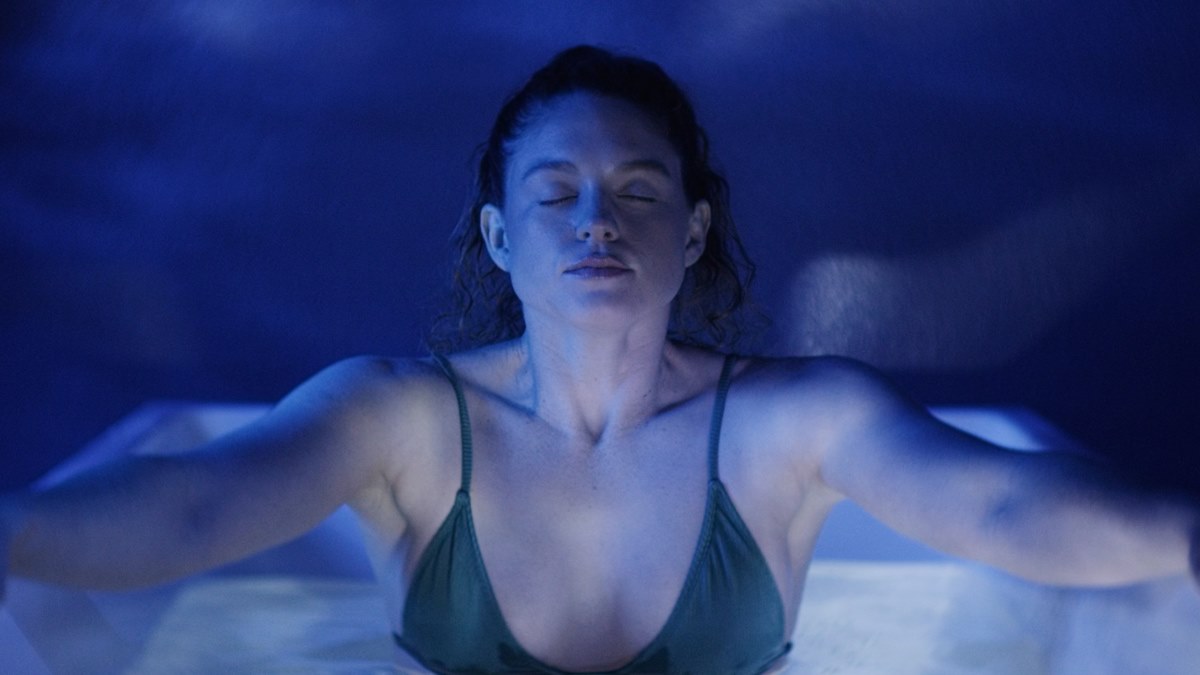Float therapy offers a serene, uninterrupted environment that many find enhances their meditation practice right from the start. At Altered States Wellness, we understand how sensory reduction can gently support deepening presence and self-awareness—something meditators of all levels can appreciate.
Understanding Float Therapy and Its Connection to Mindfulness
Float therapy, sometimes called sensory deprivation or floatation REST (Reduced Environmental Stimulation Therapy), involves lying in a warm, buoyant pool filled with Epsom salt. The water’s temperature matches the skin’s surface, and the enclosed space blocks out light and sound. With no gravity, no distractions and gentle buoyancy, the mind finds space to settle. For meditators, this setting provides a ready-made vessel for cultivating mindfulness—the art of observing thoughts, feelings and sensations without judgment.
Float tanks create an optimal landscape for returning to silent awareness. The body feels supported yet still, and with stimuli minimized, thoughts often soften or slow. That creates opportunity to notice patterns, subtle emotions or physical sensations you might not otherwise catch in everyday life. In this way, float therapy aligns with the quiet observation central to meditation.
Entering a Deeper State of Awareness
Meditation often starts with focusing the breath or body, but beginning in a low-stimulation environment helps gently bypass restlessness or mental noise. The sensation of floating can feel like a mild shift into inner stillness. Without external triggers—no clocks ticking, no car horns, no ambient temperature changes—attention naturally moves inward.
Early in a float session, the mind often relaxes, and you may notice the usual mental chatter begins to subside. That’s not achieved through effort; it arises because the tank allows awareness to land on itself. Once thoughts begin to recede, your attention can settle more fully on breathing, sensation, or simple presence—core elements of mindfulness practice. It becomes easier to witness thoughts without chasing them, and sensations without narrating them.
Navigating the Inner Landscape
When the space around you literally disappears, the only environment left is your inner one. That invites exploration. Some people find vivid imagery in vivid colors behind closed eyelids; others feel a wave-like pleasure moving through the body. Whatever arises is just another sensation to observe.
Rather than chasing or resisting these internal experiences, float therapy encourages meeting them with curiosity and openness. If your mind drifts, you notice the feeling and return attention. If tension surfaces in your neck or jaw, you simply land there, breathe and soften into it. Through regular sessions, that same curious awareness becomes easier to access off the mat when life gets intense.
Cultivating Present-Moment Awareness
Floating provides a deep lesson in noticing small shifts. A slight breeze might brush over your skin, subtle body temperature changes become clear, heartbeats feel louder, breathing rhythm slow—and all while time slips by. In everyday meditation, we seek this gentle noticing—tracking sensations, emotions, or breath as they are.
Float therapy removes distractions so each sigh, each micro-movement becomes something to simply attend to. That builds your capacity to bring more attention to subtle aspects of experience—whether that’s your feet touching the floor, the sound of an engine, or the taste of water.
Developing Compassionate Awareness
Floating encourages a compassionate relationship with the present moment. No matter what arises—boredom, discomfort, grief, elation—it’s noticed without reacting. Floating teaches that inner experiences don’t need immediate response: they can be observed, breathed with, and allowed to pass.

That same approach feeds mindfulness meditation. Rather than criticizing the mind or getting frustrated with wandering thoughts, you learn to track, acknowledge and return to awareness with kindness. Floating gently gives you practice in patience with your own inner terrain.
Breaking Free from Habitual Patterns
On land, automatic reactions shape most days: checking your phone at the first moment of boredom, fixating on tension in your shoulders or replaying the day’s events. Floating slows that down. With physical movement removed, common reactions to internal discomfort often dissolve. You find yourself simply observing, perhaps even immersed in curiosity.
That can translate into more mindful, intentional living later. When the urge to scroll arises, you might notice it earlier and pause rather than act. When irritation surfaces, you may breathe into it. Floating offers a repeated direct experience of how habits can shift when we stop chasing or reacting.
Supporting a Variety of Meditation Styles
Float therapy supports many forms of meditation. Whether you focus on sound, breath, body scan, visual mantra or open-awareness, the tank allows each practice to deepen. With no guidance needed, you can arrive, settle in, gently choose your meditation style and explore.
For mantra practitioners, silence and stillness amplify the inner resonance of repeated phrases. For open-awareness meditators, subtle sensations and floating world provide rich ground. For breath-focused practice, ease of movement makes the breath more felt and present.
Building Neuroplasticity Around Calm States
Though we don’t want to make medical claims, emerging science suggests environments like float pods may enhance neuroplasticity—supporting new neural patterns associated with calm awareness. Repeated exposure to reduced stimulation, combined with focused attention, appears to help the brain shift into states more attuned with mindfulness. Over time, these shifts may make it easier to sustain presence on the yoga mat or throughout daily tasks.
Dogs rolling onto their backs in water have nothing on the mind’s lightness in floatation—yet your capacity for calm attention grows in much the same way: through ease and repetition.
Deepening Self-Awareness and Insight
When external input disappears, the mind sometimes turns inward with more clarity. Themes, questions or emotional movements may surface. Floating can become a container for gentle reflection — though slower-paced — where insights arise without strain.
Those modest epiphanies often carry over into meditation sessions or journaling after floats. You simply notice a belief or inner image and place curiosity on it. That can help deepen self-awareness over time.
Practical Guidance to Enhance Mindful Floating
Deciding to float with meditation in mind? Start slow. A 60‑ to 90‑minute session allows time to settle beyond the doorway of novelty. Water temperature around 93.5°F helps your nervous system soften, and earplugs plus an optional cup of filtered water help draw attention inward.
Before floating, set a simple intention—not to solve or fix anything, but perhaps “Today I’ll stay curious with whatever arises.” That intention becomes a gentle anchor during turbulence.
After floating, move slowly. Some people love to meditate in the same space right after. Others prefer a brief journal reflection or a quiet stretch. Testing what settles your nervous system most effectively can help you weave float insights into daily life.
A Place to Practice Present-Moment Rituals
Many meditators use rituals to anchor practice—lighting candles, closing eyes, bowing to signal beginning. Float therapy can be another sensory ritual. Walking slowly to the pod, breathing as you lie in water, noticing how the world adjusts when you emerge—all create subtle ceremony. That drama-free routine becomes part of your meditation life and can extend into daily mindful habits.
Balancing Float Time with Other Practices
Float therapy isn’t a substitute for meditation, just a support. Some people alternate float sessions with breathwork, stretching or guided programs. Others integrate floating after a longer retreat. Many find the complementary nature of floating adds strength, softness and curiosity to their day.
When floating in alignment with stronger meditation routines, coherence grows. Inner quiet, curiosity and acceptance learned in the pod become easier to access in community, work or home spaces.
Cautions and Mindful Considerations
Float therapy isn’t for everyone. If enclosed water spaces create anxiety, working with a shorter glass entry or an open float room can help. Some people find their minds restless at first—if so, short 30‑minute floats with a simple intention work well.
No need to force depth; even gentle rest in moderate silence has value. If medical or mental health situations are present, consider discussing any concerns with a professional before starting.
Conclusion
Float therapy opens a door—quiet, soft and inviting—into deeper meditation and mindfulness. The canvas of silence, buoyancy and darkness helps awareness settle, shift habitual patterns and foster compassionate presence. When gradually blended into your meditation routine, floats can serve as soft anchors to presence, curiosity and gentle inquiry.
Adding quiet float time isn’t about high performance or transcendence. Instead it’s about small, simple invitations to stay present. That ethos aligns fully with meditative mind training—and each session can help you return to yourself, a little more often, and with a softer heart.




